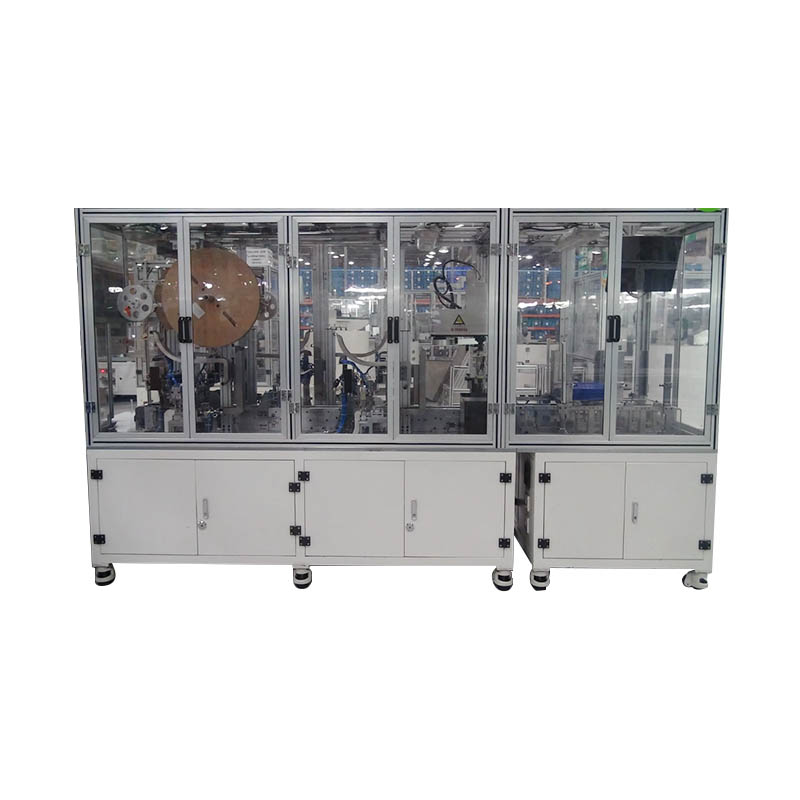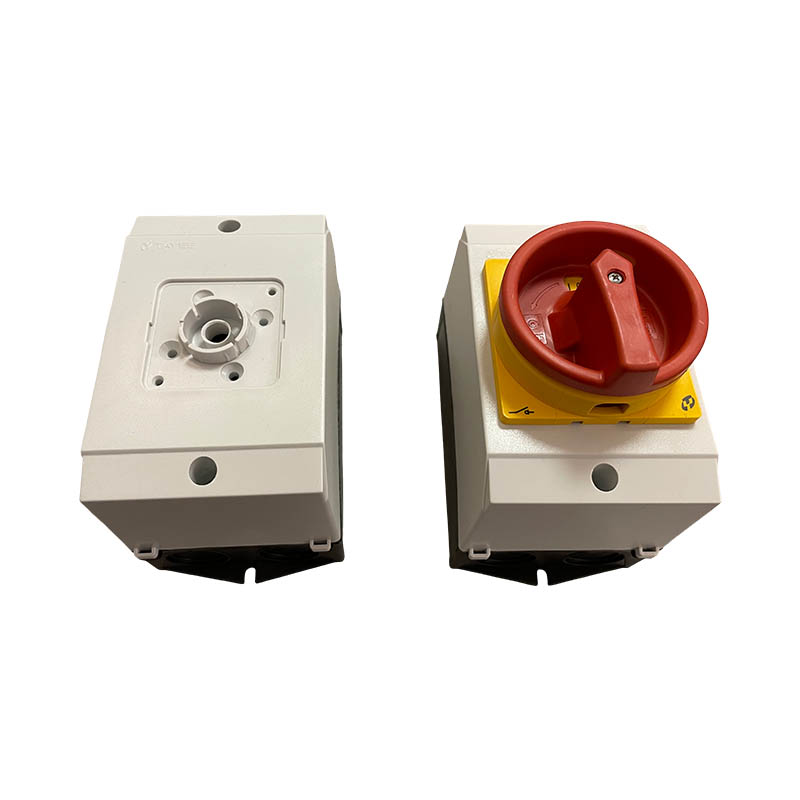How Electric Control Cabinets Reshape the Nerves of Industrial Automation?
Release Time : 2025-11-20
In modern industrial systems, automation is no longer an option, but a core driving force for improving efficiency, ensuring safety, and achieving intelligent manufacturing. As the "nerve center" of industrial automation systems, electric control cabinets, with their highly integrated, intelligent, and modular characteristics, are quietly reshaping the entire neural network of industrial automation.
1. Electric Control Cabinets: The "Nerve Center" of Industrial Automation
An electric control cabinet is a closed device in industrial equipment used to centrally house electrical components such as circuit breakers, contactors, relays, PLCs, frequency converters, and power modules. It not only undertakes the basic functions of power distribution, signal transmission, and equipment protection, but also achieves precise scheduling of each link in the production line through logic control. It can be said that without efficient and reliable electric control cabinets, industrial automation is like a body without a brain, unable to operate in a coordinated manner. Traditional control cabinets are mostly customized designs, with complex wiring and difficult maintenance. However, with the advent of Industry 4.0, the role of control cabinets is transforming from "passive execution units" to "active intelligent nodes," becoming a bridge connecting physical equipment and the digital world.
2. Intelligent Upgrade: Giving Control Cabinets "Thinking Ability"
With the integration of the Internet of Things (IoT), edge computing, and artificial intelligence (AI) technologies, the new generation of intelligent electric control cabinets is beginning to possess the capabilities of data acquisition, status monitoring, fault early warning, and even adaptive adjustment. For example, by using built-in sensors to monitor parameters such as current, voltage, and temperature in real time, and combining this with local analysis via edge computing modules, early warnings can be issued before anomalies occur, significantly reducing the risk of downtime. Furthermore, intelligent control cabinets can seamlessly interface with upper-level SCADA systems or MES platforms, uploading underlying equipment operating data to the cloud for remote monitoring and predictive maintenance. This closed-loop mechanism of "perception-analysis-response" transforms the control cabinet from an isolated hardware enclosure into a key node in the industrial automation nervous system with "thinking" and "feedback" capabilities.
3. Modularization and Standardization: Accelerating the Flexible Transformation of Production Lines
Faced with increasingly diverse production demands, enterprises urgently need to quickly adjust production line layouts and processes. Traditional customized control cabinets have long lead times and high costs, making it difficult to meet the requirements of flexible manufacturing. Modular electric control cabinets, through pre-installed standard functional units, achieve "plug-and-play" rapid deployment. Standardized design not only shortens project delivery cycles but also reduces the difficulty of later maintenance. When a part fails, technicians can quickly replace the corresponding module without disassembling the entire cabinet. This flexibility greatly improves the production line's response speed and resilience, providing a solid hardware foundation for intelligent manufacturing.
4. Green and Safe: Building a Sustainable Automation Ecosystem
Driven by the "dual carbon" goal, energy conservation and safety have become indispensable dimensions of industrial automation. Modern electric control cabinets effectively reduce power loss through optimized circuit design, the use of high-efficiency components, and intelligent energy management systems. Combined with IP protection ratings and EMC electromagnetic compatibility design, they ensure stable operation in harsh industrial environments. More importantly, control cabinets integrating safety PLCs and emergency stop circuits can cut off power in milliseconds in the event of a hazard, ensuring the safety of personnel and equipment. This "safety embedded" design concept makes the control cabinet a crucial barrier in building inherently safe factories.
Although small, the electric control cabinet carries the "nerve network" of industrial automation. From basic power distribution to intelligent decision-making, from rigid control to flexible collaboration, it is constantly expanding its boundaries through technological iteration. In the future, with the deep integration of 5G, digital twins and AI technologies, electric control cabinets will further evolve into intelligent terminals with autonomous learning and collaborative optimization capabilities, truly becoming the core engine driving efficient, safe and green development in the Industry 4.0 era.
1. Electric Control Cabinets: The "Nerve Center" of Industrial Automation
An electric control cabinet is a closed device in industrial equipment used to centrally house electrical components such as circuit breakers, contactors, relays, PLCs, frequency converters, and power modules. It not only undertakes the basic functions of power distribution, signal transmission, and equipment protection, but also achieves precise scheduling of each link in the production line through logic control. It can be said that without efficient and reliable electric control cabinets, industrial automation is like a body without a brain, unable to operate in a coordinated manner. Traditional control cabinets are mostly customized designs, with complex wiring and difficult maintenance. However, with the advent of Industry 4.0, the role of control cabinets is transforming from "passive execution units" to "active intelligent nodes," becoming a bridge connecting physical equipment and the digital world.
2. Intelligent Upgrade: Giving Control Cabinets "Thinking Ability"
With the integration of the Internet of Things (IoT), edge computing, and artificial intelligence (AI) technologies, the new generation of intelligent electric control cabinets is beginning to possess the capabilities of data acquisition, status monitoring, fault early warning, and even adaptive adjustment. For example, by using built-in sensors to monitor parameters such as current, voltage, and temperature in real time, and combining this with local analysis via edge computing modules, early warnings can be issued before anomalies occur, significantly reducing the risk of downtime. Furthermore, intelligent control cabinets can seamlessly interface with upper-level SCADA systems or MES platforms, uploading underlying equipment operating data to the cloud for remote monitoring and predictive maintenance. This closed-loop mechanism of "perception-analysis-response" transforms the control cabinet from an isolated hardware enclosure into a key node in the industrial automation nervous system with "thinking" and "feedback" capabilities.
3. Modularization and Standardization: Accelerating the Flexible Transformation of Production Lines
Faced with increasingly diverse production demands, enterprises urgently need to quickly adjust production line layouts and processes. Traditional customized control cabinets have long lead times and high costs, making it difficult to meet the requirements of flexible manufacturing. Modular electric control cabinets, through pre-installed standard functional units, achieve "plug-and-play" rapid deployment. Standardized design not only shortens project delivery cycles but also reduces the difficulty of later maintenance. When a part fails, technicians can quickly replace the corresponding module without disassembling the entire cabinet. This flexibility greatly improves the production line's response speed and resilience, providing a solid hardware foundation for intelligent manufacturing.
4. Green and Safe: Building a Sustainable Automation Ecosystem
Driven by the "dual carbon" goal, energy conservation and safety have become indispensable dimensions of industrial automation. Modern electric control cabinets effectively reduce power loss through optimized circuit design, the use of high-efficiency components, and intelligent energy management systems. Combined with IP protection ratings and EMC electromagnetic compatibility design, they ensure stable operation in harsh industrial environments. More importantly, control cabinets integrating safety PLCs and emergency stop circuits can cut off power in milliseconds in the event of a hazard, ensuring the safety of personnel and equipment. This "safety embedded" design concept makes the control cabinet a crucial barrier in building inherently safe factories.
Although small, the electric control cabinet carries the "nerve network" of industrial automation. From basic power distribution to intelligent decision-making, from rigid control to flexible collaboration, it is constantly expanding its boundaries through technological iteration. In the future, with the deep integration of 5G, digital twins and AI technologies, electric control cabinets will further evolve into intelligent terminals with autonomous learning and collaborative optimization capabilities, truly becoming the core engine driving efficient, safe and green development in the Industry 4.0 era.







